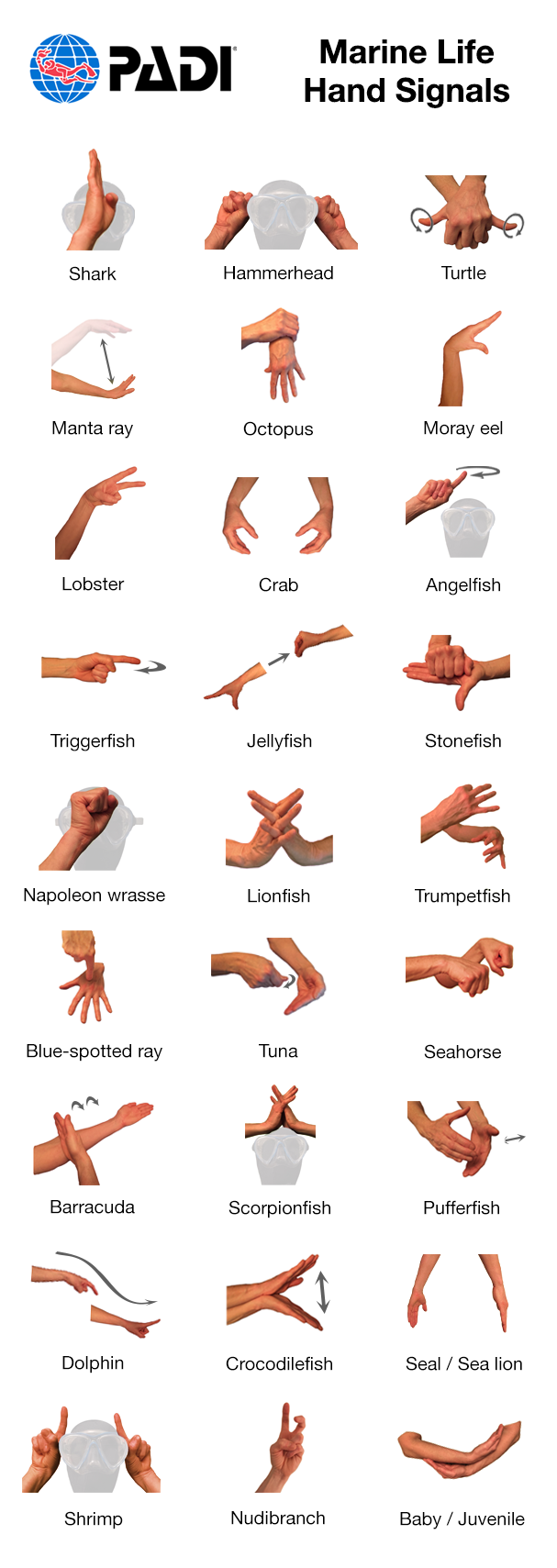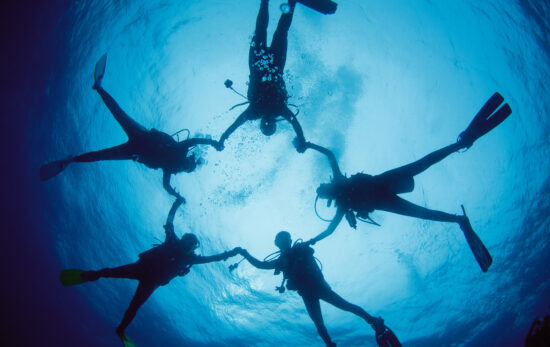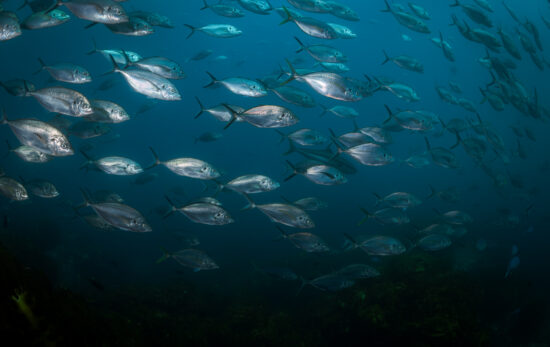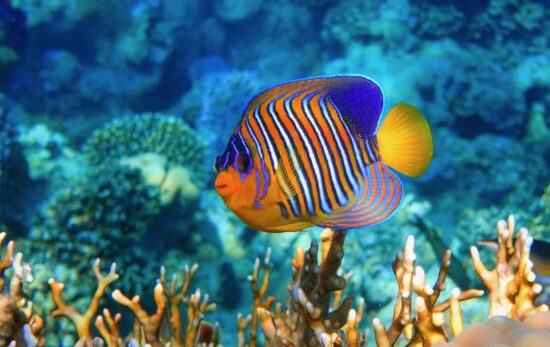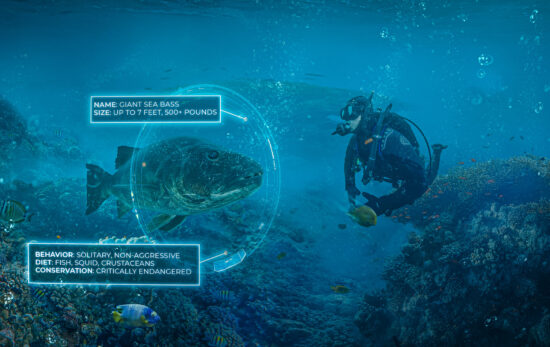Without the ability to talk underwater, scuba divers are pretty adept at having entire conversations using just a few hand signals—whether that’s navigation directions, teaching dive skills, or even pointing out plastic marine debris! But, without a doubt, marine life hand signals are the most fun to learn.
The most common hand signals typically mimic a creature’s appearance, movement, or namesake (such as the barracuda’s stripes, the moray’s mouth, or the “halo” for angelfish). What’s more, many scuba signals are shared with those used above land in sign languages, such as ASL.
So, what is the universal shark signal? How do you tell your buddy there’s a sea lion behind them? Here are our favorite marine life hand signals that every diver should learn.
Marine Life Hand Signals
Mammals, Turtles, Sharks, and Rays
- Shark: Hold the side of your hand against your forehead
- Hammerhead: Place your fists on either side of your head
- Manta ray: Flap both of your arms like you’re flying
- Blue-spotted ray: Use your finger to tap random points on the back of your other hand
- Dolphin: Ripple and move your index finger to mimic the way a dolphin swims
- Seal / Sea lion: Make a clapping motion with both of your arms extended
- Turtle: Place one hand on top of the other and rotate your thumbs
Crustaceans and Critters
- Octopus: Wiggle your downturned fingers like they’re tentacles
- Seahorse: Move both hands up and down like you’re riding a hobby horse
- Moray eel: Tap the fingers and thumb of one hand together
- Crab: The same as for moray eel, but do it with both hands turned sideways
- Lobster: Do a scissor-like motion with your index and middle finger, on both hands
- Shrimp: Point your index fingers upwards on either side of your forehead
- Nudibranch: Create a “v” shape with your fingers and wiggle the ends
- Jellyfish: Move your hand while opening and closing your fingers like tentacles
Other Fish
- Stonefish: Make a fist and place it on the palm of your other hand
- Napoleon wrasse: Hold your fist against your forehead
- Lionfish: Interlock your fingers and wiggle them
- Scorpionfish: Like lionfish, but put your hands on top of your head
- Trumpetfish: Hold and move your fingers like you’re playing the trumpet
- Tuna: Create a turning motion with one hand against the other, as if you’re opening a can
- Barracuda: With one hand, do a chopping motion along your other arm
- Angelfish: Draw a hoop (halo) shape above your head with your finger
- Triggerfish: Point and bend your index finger, similar to pulling a trigger
- Pufferfish: Clasp your hands and move them toward and away from each other
- Crocodilefish: Put your palms together, then open and close them at the fingertips
And Finally…
- Juvenile (baby): Add a cradling motion before the regular hand signal to indicate a juvenile
Of course, there are many more marine life hand signals than this list alone (and they can also differ from place to place and from person to person). Share your favorites with us by tagging #PADI on social media and test your marine life hand signal knowledge via our TikTok quiz!
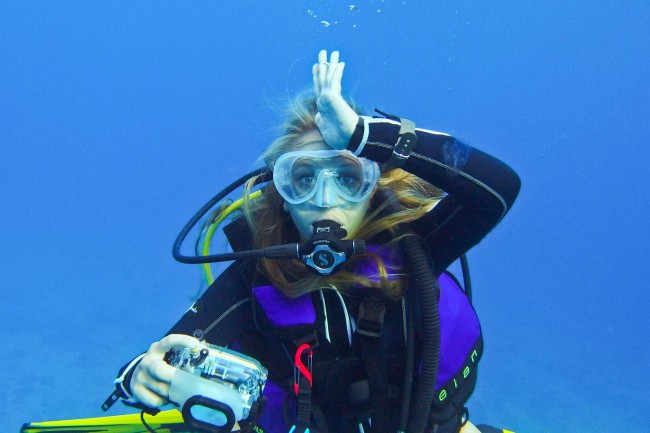
Why Learn Marine Life Hand Signals?
If your buddy is grinning and pointing frantically into the blue, you probably already know there’s a bucket-list marine life encounter on the cards. However, knowing and recognizing the correct hand signals for different underwater creatures can still be pretty helpful during your dives. After all, a camouflaged stonefish or tiny nudibranch is much easier to spot once you know what creature your buddy is pointing out—and new divers will especially appreciate being taught which marine species they’re looking at (as well as what hazards to steer clear of!)
In addition to helping scuba divers communicate underwater, using hand signals for marine life while on the surface can also be a great way to teach kids about the ocean!
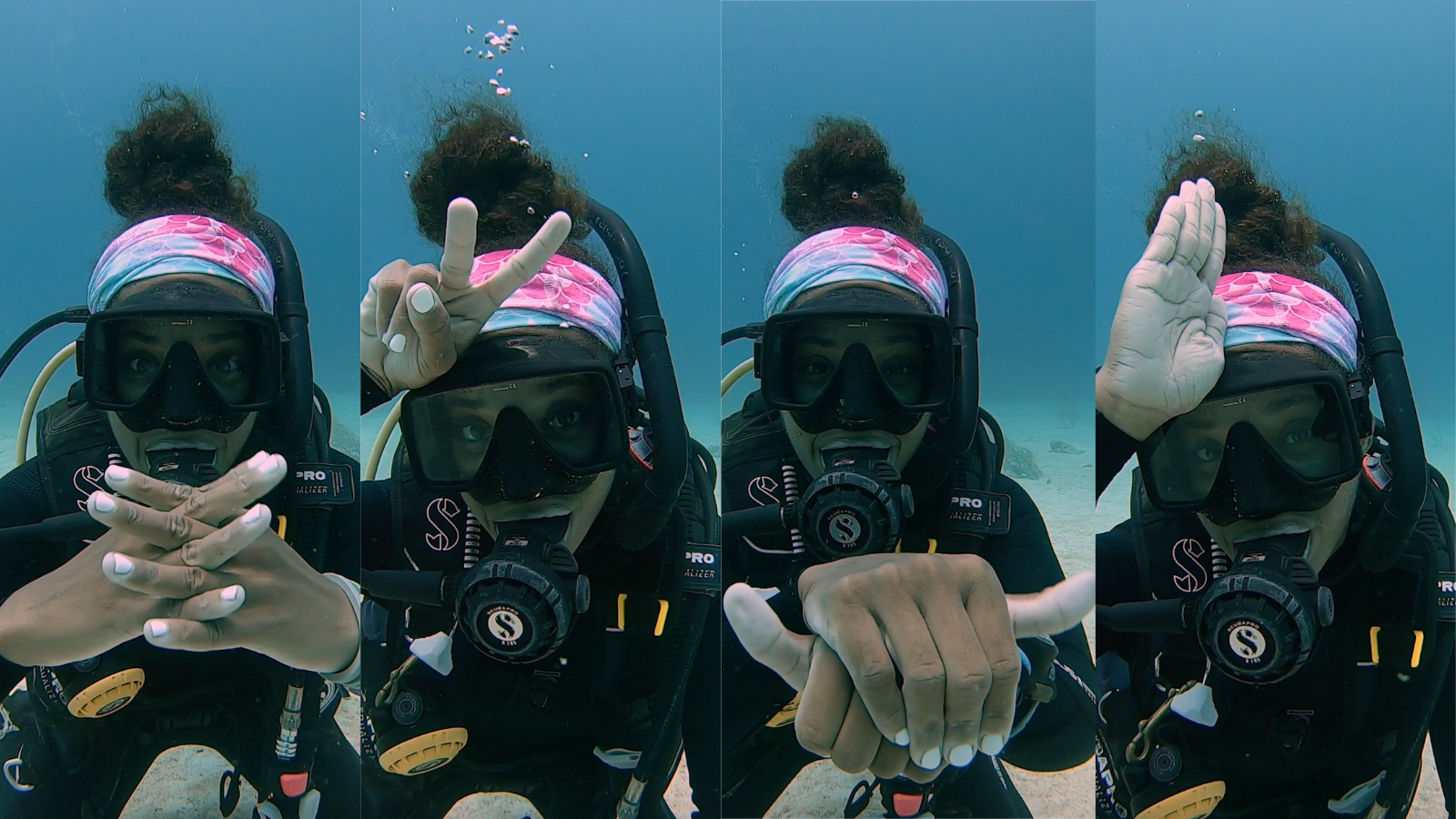
Practice Your Marine Life Hand Signals
While marine life hand signals can be useful (and fun) during any dive, they really come in handy for divers earning PADI Specialty certifications such as PADI Fish Identification and PADI Underwater Naturalist. Visit PADI eLearning or contact your local PADI Dive Shop to enroll in these courses and put your marine life hand signal knowledge to use!

